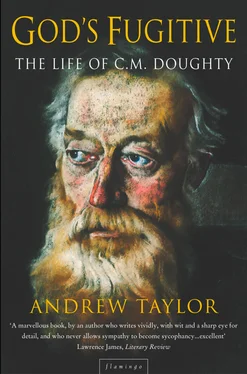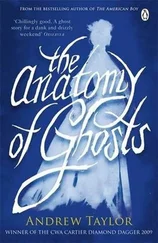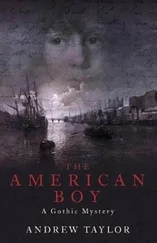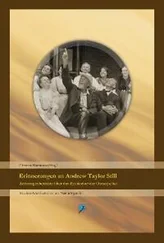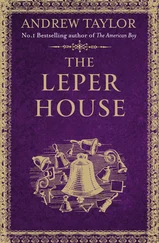Doughty’s priorities remained scientific, but his interests extended far beyond the university. This was not the quiet, studious life he had enjoyed at Cambridge: instead, he set off into the hills, lodging with farmers and gamekeepers, sometimes sleeping rough in log huts, and trekking for days at a time on shooting expeditions that took him and his guides miles into the remote mountain slopes.
It was a time that he remembered in Arabia years later when, near the end of his travels, he struggled from the interior towards Mecca ‘in a stony valley-bed betwixt black plutonic mountains, and half a mile wide: it is a vast seyl-bottom of grit and rolling stones, with a few acacia trees. This landscape brought the Scandinavian fjelde, earlier well-known to me, to my remembrance.’ 29
That description gives some idea of the Norwegian countryside to which he had travelled, supposedly for the sake of his frail health, and when, in mid 1864, he arrived at the sixty-mile-long ridge of the Jostedal-Brae, it was to find an environment and a lifestyle that were certainly no easier. ‘Here is an arctic climate, and we found the lakes covered with ice in the middle of August, still thick enough to bear some wild reindeer, which we disturbed. We slept under a stone, while it froze outside, according to a minimum thermometer.’ 30
Five separate glaciers descended from the ridge into a gorge below, which was so deep and sheer that the sun hardly reached it during the winter months. It was remote, unfriendly country, with just a few scattered farms and a rough bridle path between the rounded boulders which the glaciers had brought inching down with them from the mountains.
But it was a magical land as well, and it was not just Doughty the geologist scrambling with his guide over the rocks, ice and broken ground. As he wrote his report later, his descriptive enthusiasm struggled against a determined scientific detachment. The Nigaard glacier, he wrote,
seems to flow down in elegant curves; though in reality this is due to the tossing up of the surface by some submerged knees of the mountains, and it passes through nearly a straight channel. No stones or earth soil its glittering surface, which appears capping the cliffs and creeping down every depression and pouring out its water in picturesque threads down the rocks. 31
At the foot of Lodal’s glacier, meanwhile, water came gushing out from an arched cavern in the ice some thirty feet high. The name of the lake, Styggevaten, meant ‘horrid-water’, he jotted carefully in his notebook – names and their meanings would carry a fascination for him throughout his travels, landscape and language inextricably linked in his mind. Between the detached response and the imaginative, he saw little distinction: at times, the Jostedal-Brae sounds almost like the setting for a mystical scene from Ibsen: ‘Loud peals are heard booming among the heights when some new ice-shoot takes place and seems to smoke in the distance,’ he wrote.
It was also a landscape that encouraged thoughts about the continuity between the present and the far past – the ice offering the imaginative possibility of a direct link with the most distant history. That was the sort of speculation that appealed instinctively to Doughty, and he noted that the glaciers were continually engulfing plants and animals, preserving them virtually for eternity. Humans, too, he said, must occasionally be entombed. ‘Very early traces of the human race may some day be dug out from the deposits of the later glacial period, if man was then in existence and inhabited those parts of the globe …’
But his primary task was the more prosaic one of measuring the speed of the glaciers’ movement. He had been loaned a theodolite by the Royal Geographical Association to help him with the detailed surveying – his first contact with that august body, later relations with which were to prove volatile. For the rest, he had a rope, an iron-tipped stick, a set of metal spikes to help him stand on the ice, and the aid of a local guide, one Rasmus Rasmussen.
With this rudimentary equipment, by driving stakes into the ice of the glacier as markers, and building matching stone cairns off to one side, he produced a series of tables for the different glaciers to show the varying speed of the flow. They were, he noted with pardonable pride, the first measurements ever obtained of the seasonal motions of Scandinavian ice streams.
It was a subject of some current scientific interest. Geologists were arguing about exactly what caused glaciers to flow, and Lyell himself was enquiring into the subject for the new edition of his Principles . But though there can be no doubting the enthusiasm and determination of the twenty-one-year-old Doughty, his figures leave something to be desired. The distances between his markers, he admits, were little more than estimates; on one glacier, presumably having forgotten to use his theodolite, he has guessed the gradient; and one complete set of figures, setting out the lengths of the different glaciers, he has simply lost, replacing them with estimates.
Later, he was to claim that, in preparing the last edition of his Principles of Geology , Lyell called on the young undergraduate to ask for details of his observations. 32 It is certainly likely that Doughty made the great man’s acquaintance: the first thing he did when he returned from Norway was prepare a paper for the annual meeting of the British Association for the Advancement of Science on his observations. Lyell, then president of the association, was speaking about glaciation in his inaugural address: what more natural than that he should exchange a few words with the shy, gangling youth who had just returned from Norway? That, though, is as far as it went: the Principles includes little about Norwegian glaciers, nothing at all about the Jostedal-Brae, and certainly no acknowledgement of assistance from Charles M. Doughty and his lackadaisical measurements.
But the expedition had given him at least the beginnings of a scientific career. He had become a life member of the British Association earlier that year; now, the misspelled name of C. Montague Doughty was printed in the list of members – albeit with his address, too, wrongly listed as Dallus College, Cambridge. While the paper he had produced after his diggings at Hoxne had been only briefly noted by its title in the annual report, the account of this latest one, which was presented to the association’s Bath meeting, ran to 350 words. He had also, though still an undergraduate, been making the social contacts necessary for a career in science. He had cultivated not just the acquaintance of Sir Charles Lyell himself, but also that of several other worthies of the British Association and the Royal Geographical Society. And, most important of all, if he had been disappointed not to be given a scholarship by Downing, he was still confidently expected to gain a first-class degree.
But in December 1865 those expectations were dashed. Doughty found himself near the top of the second class in the Cambridge Tripos examinations – although it seems that his examiners were at least as disappointed as he was with the result. More than fifty years later Professor Thomas George Bonney, then Professor of Geology at London University, said of his distinguished pupil: ‘I was very sorry not to be able to give him a First, as he had such a dishevelled mind. If you asked him for a collar, he upset his whole wardrobe at your feet.’ 33 It would not be the last time in his life that Doughty would be criticized for hurling facts at his readers by the handful.
But while such an examination result would have been a setback, it would not necessarily have prevented him from following a career as a scientist, particularly as he still enjoyed the financial support of his father’s legacy. Doughty, though, seems to have changed his priorities during that final year at Cambridge: although he prepared his report on Jostedal-Brae for its full publication, he had abandoned any thought of making his name through science.
Читать дальше
